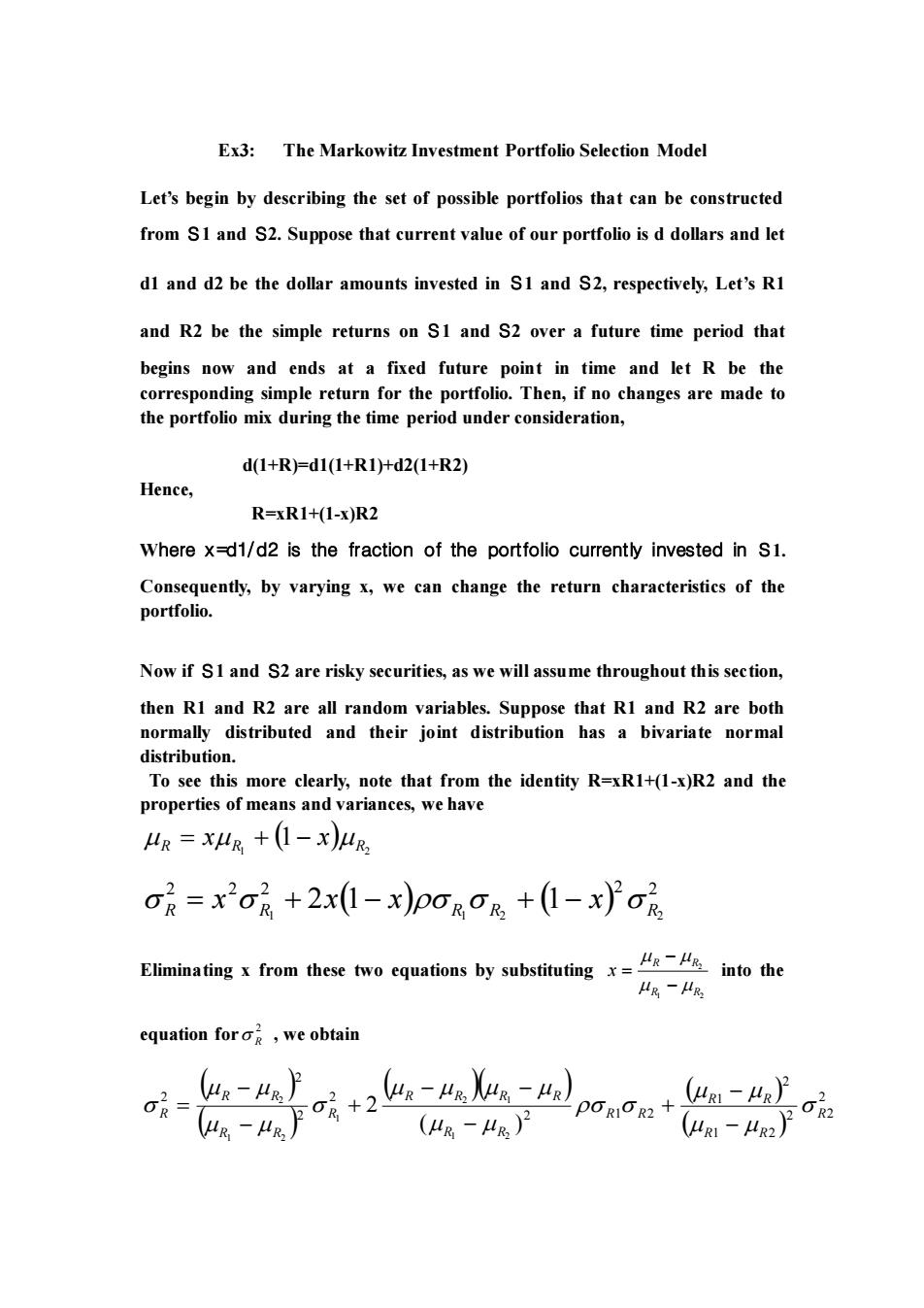正在加载图片...

Ex3:The Markowitz Investment Portfolio Selection Model Let's begin by describing the set of possible portfolios that can be constructed from SI and S2.Suppose that current value of our portfolio is d dollars and let dl and d2 be the dollar amounts invested in SI and S2,respectively,Let's RI and R2 be the simple returns on S1 and $2 over a future time period that begins now and ends at a fixed future point in time and let R be the d(1+RFd1(1+R1)+d2(1+R2) Hence, R=xR1+(I-x)R2 Where x=d1/d2 is the fraction of the portfolio currently invested in S1. Consequently,by varying x,we can change the return characteristics of the portfolio. Now if SI and S2 are risky securities,as we will assume throughout this section, then R1 and R2 are all random variables.Suppose that R1 and R2 are both normally distributed and their joint distribution has a bivariate normal distribution. To see this more clearly,note that from the identity R=xR1+(1-x)R2 and the properties of meansand variances.wehave 4R=x4R+(1-x4 oR=x2oR+2x(1-x)PORO+(1-x)oR Eliminating from these two cquations by substitutinginto the 4%-4% equation for,we obtain a-听+2c =44 PORIOR2 +4a-4} (山%-4R)尸 aa-Ae护8 Ex3: The Markowitz Investment Portfolio Selection Model Let’s begin by describing the set of possible portfolios that can be constructed from Ѕ1 and Ѕ2. Suppose that current value of our portfolio is d dollars and let d1 and d2 be the dollar amounts invested in Ѕ1 and Ѕ2, respectively, Let’s R1 and R2 be the simple returns on Ѕ1 and Ѕ2 over a future time period that begins now and ends at a fixed future point in time and let R be the corresponding simple return for the portfolio. Then, if no changes are made to the portfolio mix during the time period under consideration, d(1+R)=d1(1+R1)+d2(1+R2) Hence, R=xR1+(1-x)R2 Where x =d1/d2 is the fraction of the portfolio currently invested in Ѕ1. Consequently, by varying x, we can change the return characteristics of the portfolio. Now if Ѕ1 and Ѕ2 are risky securities, as we will assume throughout this section, then R1 and R2 are all random variables. Suppose that R1 and R2 are both normally distributed and their joint distribution has a bivariate normal distribution. To see this more clearly, note that from the identity R=xR1+(1-x)R2 and the properties of means and variances, we have ( ) 1 2 R R 1 R = x + − x ( ) ( ) 2 2 2 2 2 1 1 2 2 R R 2 1 R R 1 R = x + x − x + − x Eliminating x from these two equations by substituting 1 2 2 R R R R x − − = into the equation for 2 R , we obtain ( ) ( ) ( )( ) ( ) ( ) 2 2 2 1 2 2 1 2 1 2 2 2 2 2 ( ) 2 1 2 2 1 1 1 2 2 R R R R R R R R R R R R R R R R R R R − − + − − − + − − =